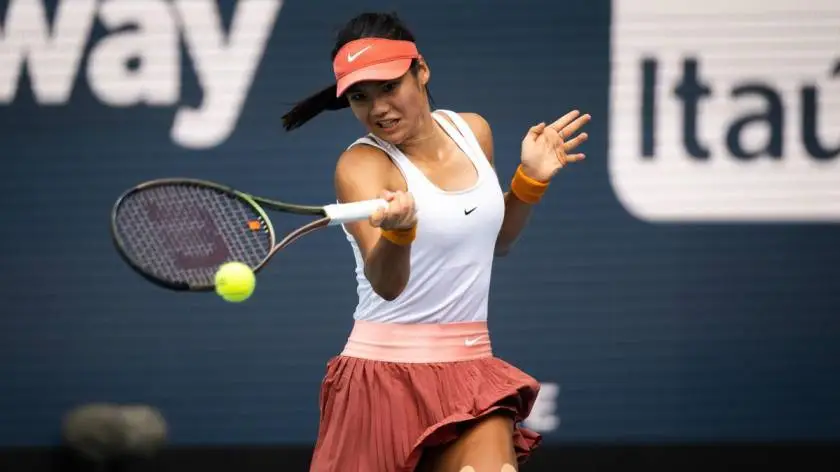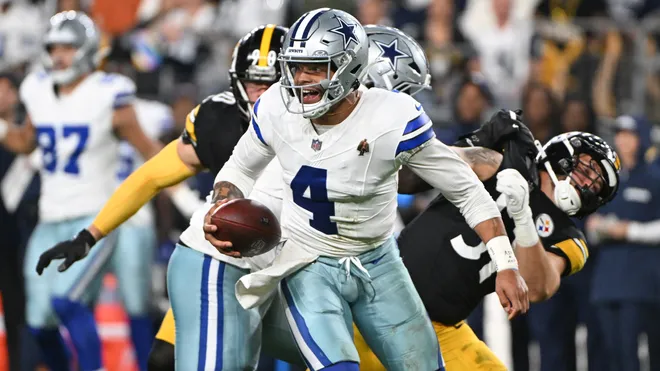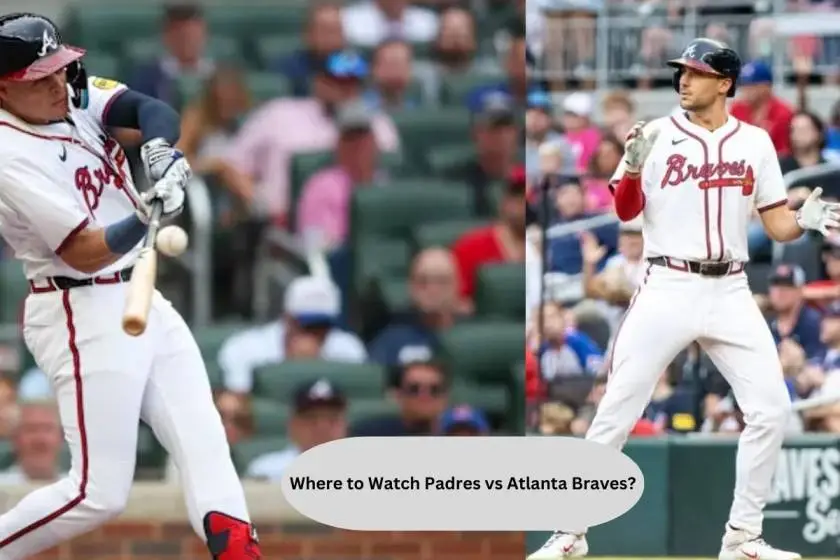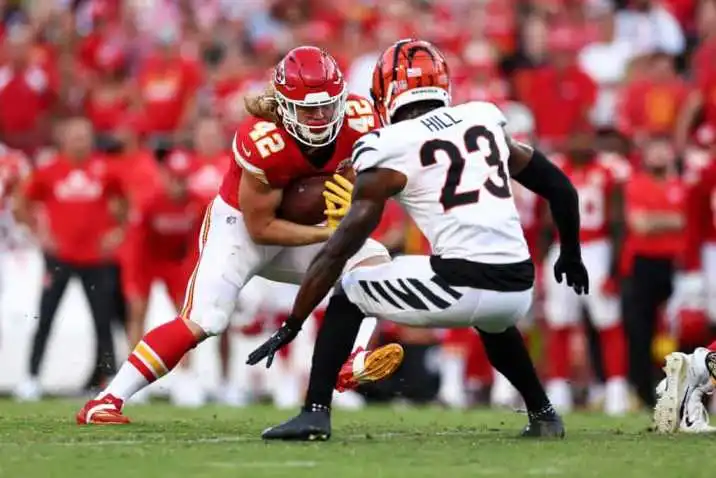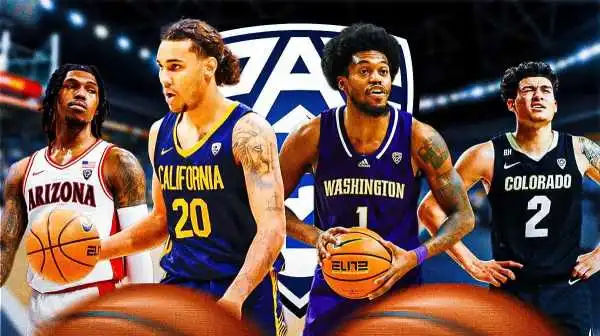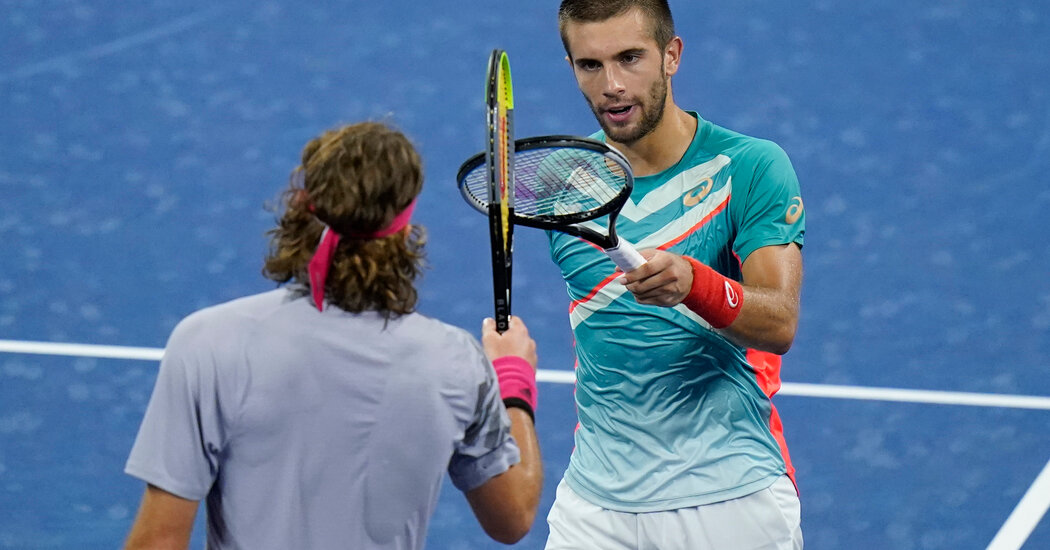
Despite Big Hiccups and No Fans, the U.S. Open Has Had Some Classics
Phase 1 of the weirdest United States Open was full of tennis lessons we never expected we would have to learn.
Don’t pull a ball out of your pocket and smack it without looking.
Don’t play cards with Benoît Paire.
Don’t sign a new protocol and stay in a Long Island hotel. You still might not be allowed to cross a county line to play your match in Queens.
Don’t argue line calls on the outside courts. With automated calls, there is no one to argue with.
But there was another revelation, too. You don’t need a crowd to have a classic U.S. Open night match.
Until now, the players and the spectators seemed to be essential ingredients: feeding off one another, inspiring one another.
But Borna Coric and Stefanos Tsitsipas did it on their own in Louis Armstrong Stadium, forging a mutual masterpiece as they exchanged shouts, dirty looks and all manner of shots: bold, subtle, cocksure and humanizingly shaky in the third round.
Tsitsipas, a prodigiously talented Greek full of hunger and swagger, seemed to have the match under control at 5-1 in the fourth set and seemed to have it under lock and key serving at 5-4, 40-0. But Coric, who has a tattoo that reads “There is nothing worse in life than being ordinary,” stayed true to his body art.
One of the best movers in the men’s game, the young, bristle-haired Croatian kept grinding and swinging. He saved six match points and leveled the match at two sets apiece as Friday night turned into Saturday.
Tsitsipas could have been excused for curling up into a ball on the baseline at that stage. But he stayed upright and even went up a break in the fifth set before Coric leveled.
Tsitsipas had four more break-point chances down the stretch. But Coric held phenomenally firm and Tsitsipas cracked again, double faulting twice in the fifth-set tiebreaker as Coric prevailed 6-7 (2), 6-4, 4-6, 7-5, 7-6 (4).
“I have to be honest, and say I was really lucky,” said Coric, who is now in the quarterfinals. “In the third and fourth set, he was playing unbelievable tennis, and I felt like I had no chance.”
It was not the first tennis pandemic epic (a pandepic, perhaps?): Andy Murray and his bionic hip won a five-setter of their own in the first round against Yoshihito Nishioka. Earlier on Friday, Denis Shapovalov came back from a break down in the fifth to defeat Taylor Fritz.
Although Novak Djokovic’s fourth-round default was certainly the most dramatic moment of the first week, he and Pablo Carreño Busta did not even finish the first set. For long-form quality, relentless intensity and midnight madness timing, there was no topping Coric and Tsitsipas.
“This is probably the saddest and funniest at the same time thing that has ever happened in my career,” tweeted Tsitsipas, in new-generation fashion, just minutes after it happened.
It would have been the match of just about any tournament — this one, coronavirus willing, still has matches through Sunday — and that it could happen in a fan-free environment in an individual sport was both reaffirming and unsettling.
How much do the roars and the jeers really matter?
The thought is, of course, not unique to tennis at the moment. Sport after sport is discovering what it means to play behind closed doors.
But there were moments on Friday night when the lack of outside buzz and external distraction actually seemed to elevate the duel, making it possible to hear every sneaker squeak, every grunt and mutter.
The court-level camera angles helped, too, bringing viewers into the players’ space and avoiding the wider shots that would have made clear that hardly anyone was watching in person.
It was intimate, even meditative at times, as the two rivals took turns being brilliant under pressure to the sounds of the passing trains and a few shouts from their entourages.
“Look, it would have been an amazing atmosphere to have fans in there — cheering a guy on as he makes this amazing comeback,” said Brad Gilbert, who called the match for ESPN. “But I do think that the players start getting locked in, and that it’s just about you and the opponent. I don’t think they even were noticing there was no crowd.”
Call it their own bubble within a bubble.
“You could see everything develop with clarity because you had no distractions,” Gilbert said. “But listen, I’m just so grateful we have a chance to do the tennis and just see the tennis. Obviously, this model without a crowd is not sustainable for the rest of tennis ever, but for the moment, it’s a lot better than no tennis.”
The problem in New York during Week 1 was that not everyone who crossed the Atlantic to play tennis was allowed to do so, and that in Djokovic’s case, the biggest star in the men’s game essentially eliminated himself.
Staging this tournament at all has been an immense undertaking, and the U.S.T.A. does not have the same financial means as the N.B.A. with its locked-down campus at Walt Disney World in Florida. Nor did it have the wherewithal to quarantine an international field of players for two full weeks before the first ball was struck.
There were bound to be issues. For now, Paire is the only player known to have tested positive for the coronavirus in the controlled environment set up for the Western & Southern Open and the U.S. Open. But the devil has been in the details of the contact tracing, which forced seven players who had been in close contact with Paire to sign a new, more restrictive agreement in order to keep playing.
When Nassau County health officials learned that those in contact with Paire were being allowed to compete instead of remaining in full quarantine, they effectively voided the new agreement. On Saturday, the French star Kristina Mladenovic, one of those in contact with Paire, was not permitted to travel to the Billie Jean King National Tennis Center from the player hotel.
She and her Hungarian doubles partner, Timea Babos, the No. 1 seeds, were forced to withdraw before their second-round match, after Adrian Mannarino of France had been allowed to play singles on Friday after great debate. He ended up losing to Alexander Zverev.
This moving of the goal posts is not the way this situation should have been handled. Inconsistency undermines the rules, and that Mannarino was allowed to play because he was not at the hotel in Nassau County when the new edict was issued is not a good enough excuse.
Every probable scenario should have been talked through and made clear with all the potentially relevant health authorities before the tournament began.
Failing to do so undermines the U.S.T.A.’s remarkable efforts and certainly does not play well internationally.
“US Open 2020: un tournoi amateur” (an amateur tournament) wrote L’Équipe in a headline over the weekend, bemoaning the lack of consistency and the lack of agreement among health officials within the same state. “The show has sadly moved outside the tennis courts,” L’Équipe wrote. “Even in the midst of a health crisis, that is not worthy of a Grand Slam tournament.”
Babos, already back in Europe, echoed those sentiments in an Instagram post on Sunday.
“I’m sitting in my kitchen crying,” she said. “It’s terribly unfair. I see no reasonable reason why it had to be like this.”
Clearly, watching Mannarino play on Friday, it did not have to be like this. But that does not mean the 2020 U.S. Open, even tarnished and having lost its biggest men’s star, has not had its shining moments.
Most of the players seem to appreciate the opportunity (and the paycheck), and they have paid it back with tennis worthy of the occasion, worthy of a Grand Slam tournament.
Coric versus Tsitsipas was only the best of many examples: a late-night classic no doubt, even without the customary soundtrack.



